Best Filaments for Functional 3D Printed Parts
When it comes to 3D printing functional parts, choosing the right filament is crucial. Unlike decorative or prototype prints, functional components must withstand mechanical stress, temperature variations, and environmental exposure. In this article, we’ll explore the best filaments for practical, durable, and performance-driven prints — and what makes each one suitable for the job.
1. Understanding Functional Parts
Functional parts are 3D printed objects that must perform a specific job; they’re not just visual prototypes or decorative items. They often replace traditionally manufactured parts and must handle mechanical loads, environmental stress, and long-term use.
Examples include:
- Mechanical Components: gears, pulleys, clips, hinges, and levers
- Structural Elements: brackets, mounts, joints, and frames
- Industrial Fixtures: jigs, assembly guides, and machine holders
- Consumer Applications: replacement parts, tool handles, phone mounts, and drone housings
Unlike aesthetic prints, functional parts are expected to endure stress, heat, friction, and sometimes impact. Because of that, the choice of filament affects strength, flexibility, chemical resistance, and dimensional stability.

2. Key Factors When Choosing Filament for Functional Parts
Selecting the right filament is not just about what prints best — it’s about matching the material’s properties to your part’s performance requirements. Below are the most important considerations:
a. Mechanical Strength
Your filament should withstand tension, compression, or bending. High tensile strength ensures your parts won’t easily snap or deform under load. Materials like PETG, Nylon, and PC excel here.
b. Heat Resistance
Functional parts used near motors, outdoors, or under friction generate heat. PLA, for example, softens around 60°C, while Polycarbonate can handle over 110°C. Choose accordingly.
c. Impact and Flexibility
Some parts need toughness and elasticity — not just stiffness. Nylon and PCTG can absorb shock and flex without cracking, unlike brittle materials like regular PLA.
d. Chemical and UV Resistance
If your parts will be exposed to chemicals, oils, or sunlight, materials like PETG (chemical resistant) or ASA (UV resistant) are better suited.
e. Ease of Printing
Performance materials can be tricky. PLA and PETG are beginner-friendly, while ABS, ASA, and PC require higher print temperatures, enclosures, and controlled environments.
Balancing these properties ensures you pick a filament that’s strong, reliable, and suited to your part’s operating conditions.
3. Recommended Filaments for Functional Prints
| Material | Tensile Strength | Heat Resistance | Flexibility | Ease of Printing | Best For |
|---|---|---|---|---|---|
| PLA+ / Tough PLA | Medium | Low | Low | ★★★★★ | Prototypes, fixtures |
| PET-G / PCTG | High | Medium | Medium | ★★★★☆ | Mechanical parts, enclosures |
| ABS | High | Medium-High | Medium | ★★★☆☆ | Functional parts exposed to heat |
| ASA | High | High | Medium | ★★★☆☆ | Outdoor parts, UV resistance |
| Nylon (PA) | Very High | Medium-High | High | ★★☆☆☆ | Gears, moving parts |
| Polycarbonate (PC) | Extremely High | High | Low-Medium | ★★☆☆☆ | Structural, high-heat parts |
| Carbon Fiber Composites (CF-PETG, CF-Nylon, CF-PC) | Very High | High | Medium-Low | ★★☆☆☆ | Lightweight, rigid mechanical parts |
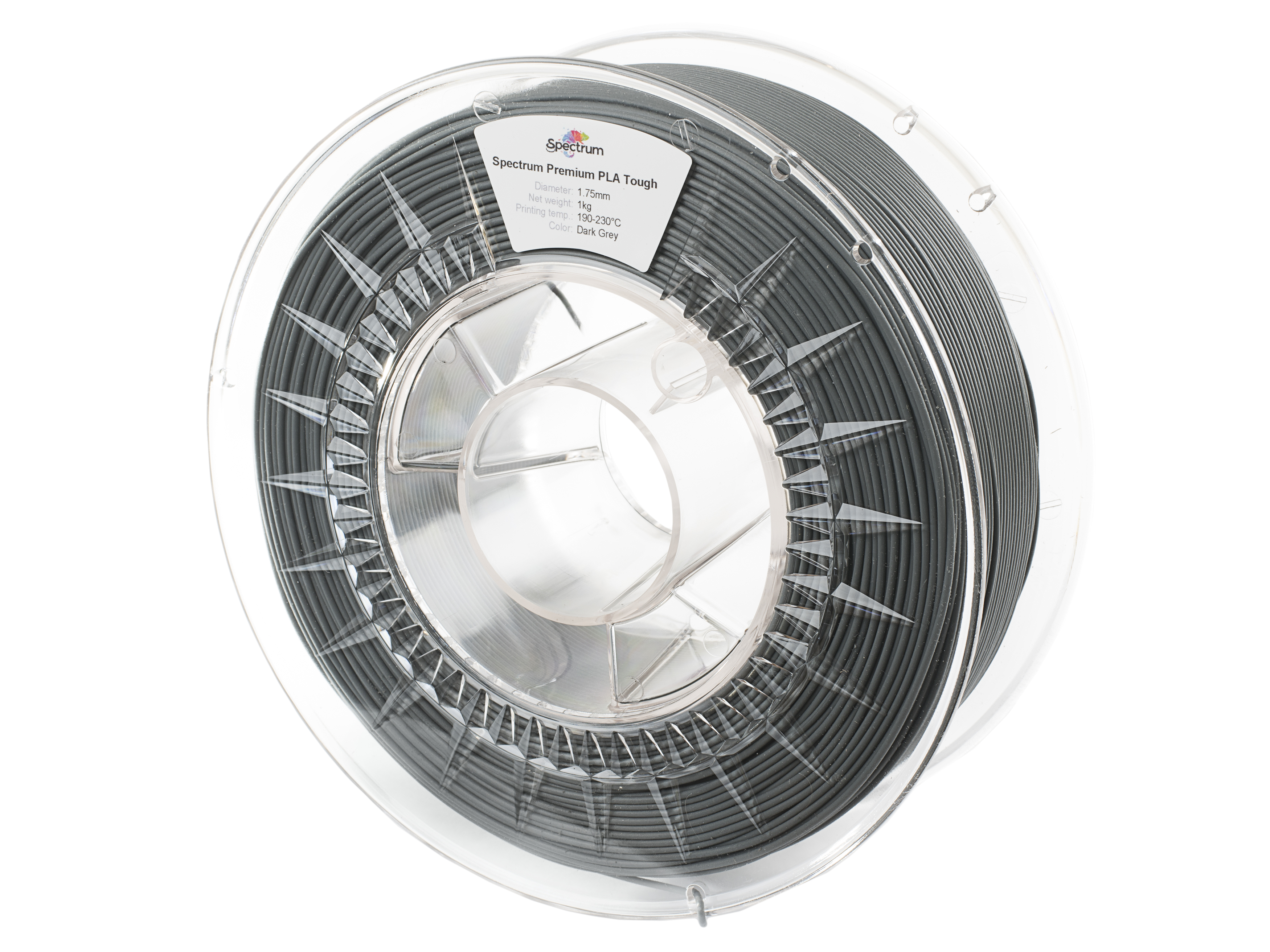
4. Detailed Overview of Each Filament
PLA+ / Tough PLA
PLA+ is a modified version of standard PLA with added durability and slight flexibility. It prints easily with minimal warping and delivers clean, detailed parts. However, it loses structural integrity under heat or continuous mechanical stress.
Advantages:
- Extremely easy to print and reliable for quick prototyping
- Sharp details and smooth surface finish
- Compatible with nearly all 3D printers
Disadvantages:
- Low heat resistance (softens around 60°C)
- Brittle under repeated stress
Best Uses:
Fixtures, visual prototypes, non-load-bearing jigs, alignment tools, or test-fit models.
Link to Product:
https://shop.spectrumfilaments.com/eng_m_Our-offer_Materials_PLA_Spectrum_PLA-Tough-2648.html
PET-G / PCTG
PETG (Polyethylene Terephthalate Glycol) and its newer counterpart PCTG (PolyCyclohexylene Dimethylene Terephthalate Glycol) combine the toughness of ABS with the easy printability of PLA. They offer excellent strength, chemical resistance, and impact durability.
Advantages:
- Great balance between strength and flexibility
- Resistant to chemicals and moisture
- Minimal warping and easy layer adhesion
Disadvantages:
- Can be stringy if not printed with proper retraction settings
- Slightly less stiff than ABS or PC
Best Uses:
Functional parts such as brackets, mechanical joints, machine guards, or electronics enclosures that need durability and reliability.
Link to Product:
https://shop.spectrumfilaments.com/eng_m_Our-offer_Materials_PETG_Spectrum_PETG-MATT-2672.html
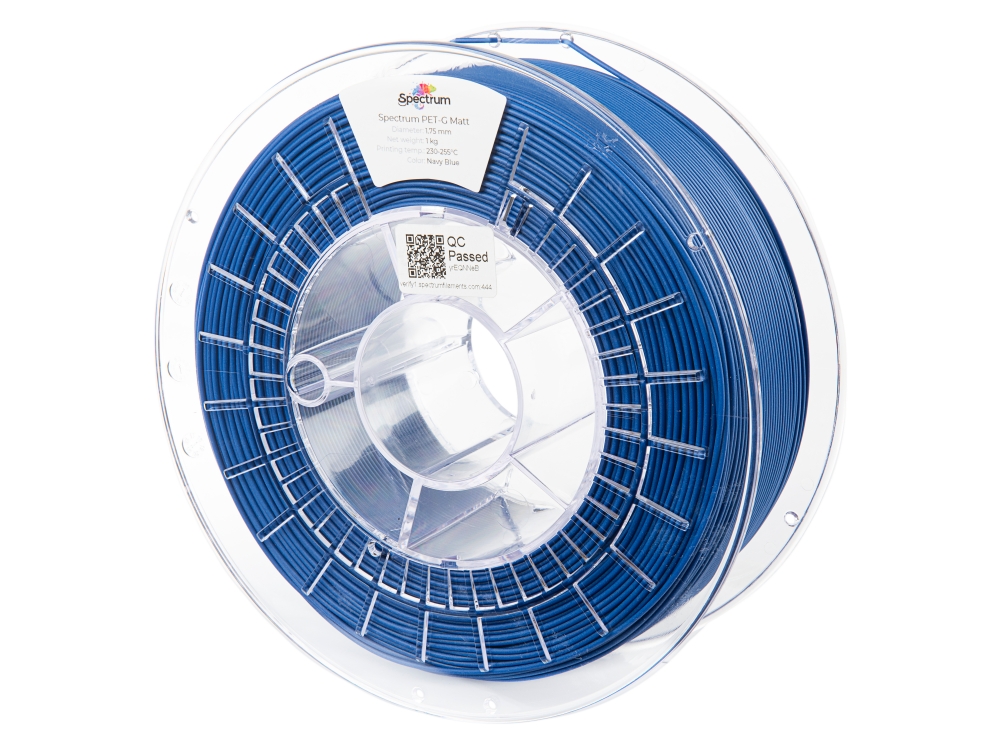
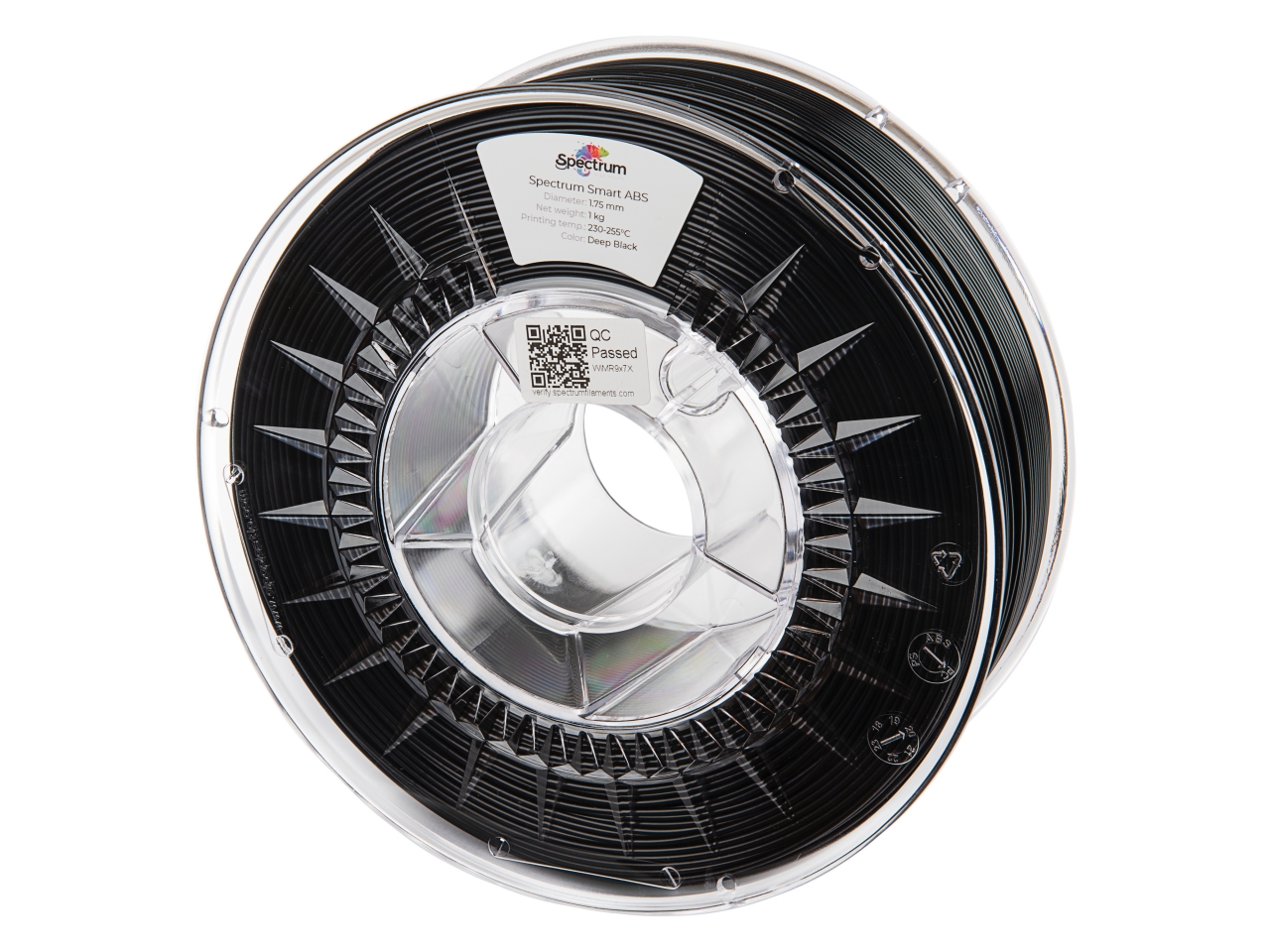
ABS (Acrylonitrile Butadiene Styrene)
ABS is an engineering-grade filament known for its toughness, machinability, and moderate heat resistance. It’s been used for decades in automotive and consumer products like LEGO bricks. However, it requires controlled printing conditions to prevent warping and cracking.
Advantages:
- High impact strength and heat tolerance
- Can be post-processed easily (sanding, acetone smoothing)
- Suitable for load-bearing applications
Disadvantages:
- Prone to warping without an enclosure
- Emits noticeable odor when printing
Best Uses:
Automotive parts, tools, or enclosures exposed to heat or mechanical load.
Link to Product:
https://shop.spectrumfilaments.com/eng_m_Our-offer_Materials_ABS_Spectrum_smart-ABS-2686.html
ASA (Acrylonitrile Styrene Acrylate)
ASA is often called the outdoor version of ABS. It retains all of ABS’s toughness but adds superior UV and weather resistance. This makes it a favorite for parts that will face sunlight, rain, or temperature changes.
Advantages:
- Excellent UV and weather resistance
- High strength and dimensional stability
- Smooth finish, even for larger parts
Disadvantages:
- Requires enclosure and stable printing conditions
- Slightly more expensive than ABS
Best Uses:
Outdoor components, automotive trims, signage mounts, or drone parts that need UV protection.
Link to Product:
https://shop.spectrumfilaments.com/eng_m_Our-offer_Materials_ASA_Spectrum_ASA-275-2693.html
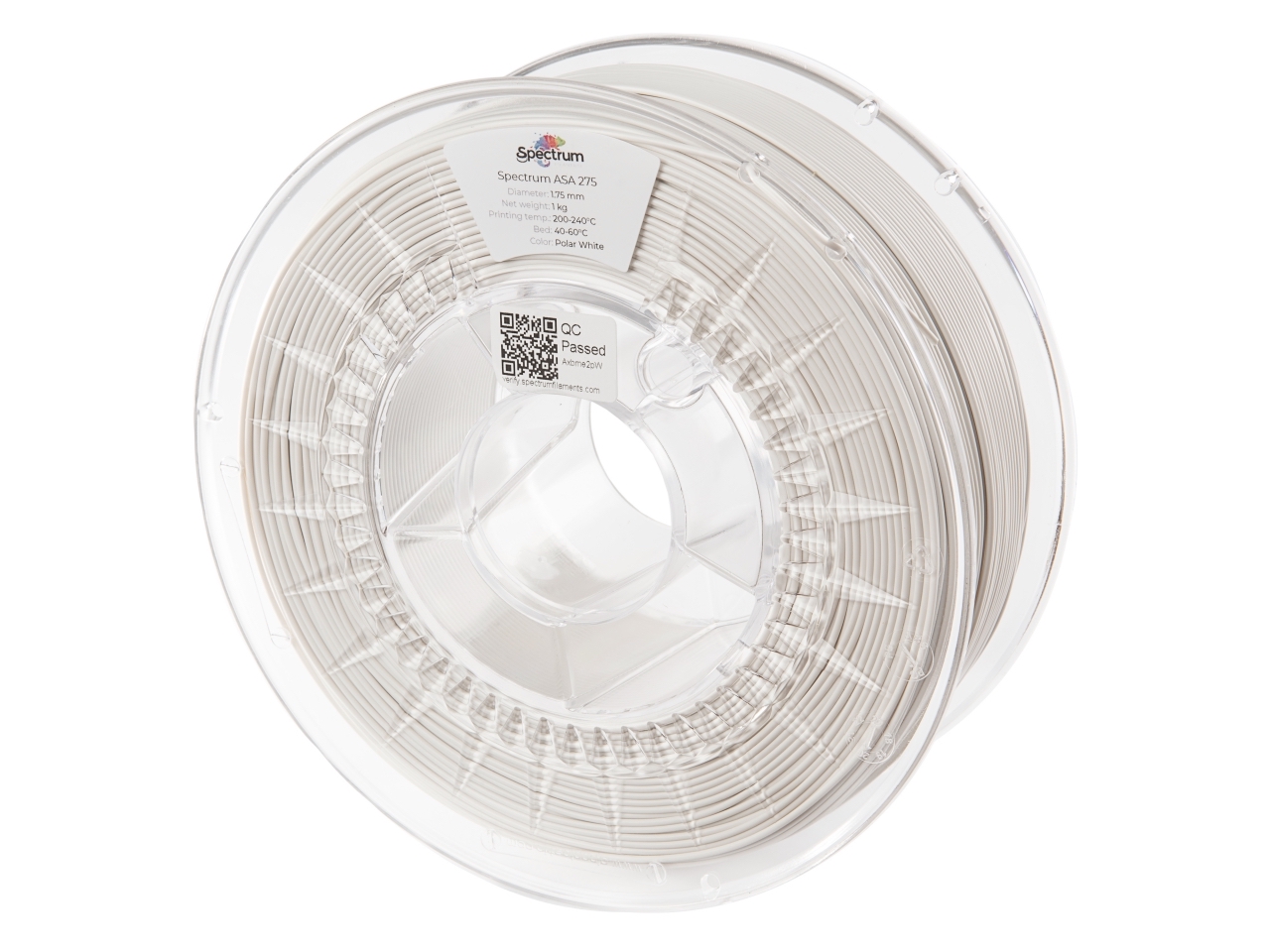

Nylon (PA)
Nylon (Polyamide) is one of the strongest and most durable filaments available. It’s both tough and flexible, making it ideal for parts that need to endure repetitive stress or impact. However, it absorbs moisture quickly, which can affect print quality if not stored properly.
Advantages:
- High toughness, flexibility, and wear resistance
- Excellent for moving or interlocking parts
- Resistant to many chemicals and oils
Disadvantages:
- Hygroscopic (needs dry storage)
- Requires high printing temperature and bed adhesion aids
Best Uses:
Gears, hinges, snap-fit parts, bushings, or mechanical linkages.
Link to Product:
https://shop.spectrumfilaments.com/eng_m_Our-offer_Materials_PA_Spectrum_PA6-Low-Warp-2709.html
Polycarbonate (PC)
Polycarbonate is an industrial-grade filament known for its extreme strength and heat resistance. It can handle high mechanical loads and sustain performance even in demanding environments. However, it requires high printing temperatures and an enclosed printer.
Advantages:
- Exceptional strength-to-weight ratio
- Can withstand temperatures above 110°C
- Impact-resistant and transparent (depending on brand)
Disadvantages:
- Needs high-temp printer and enclosure
- Prone to warping without proper setup
Best Uses:
Structural parts, protective housings, lighting enclosures, or mechanical mounts used in high-heat environments.
Link to Product:
https://shop.spectrumfilaments.com/eng_m_Our-offer_Materials_PC_Spectrum_PC-275-2722.html
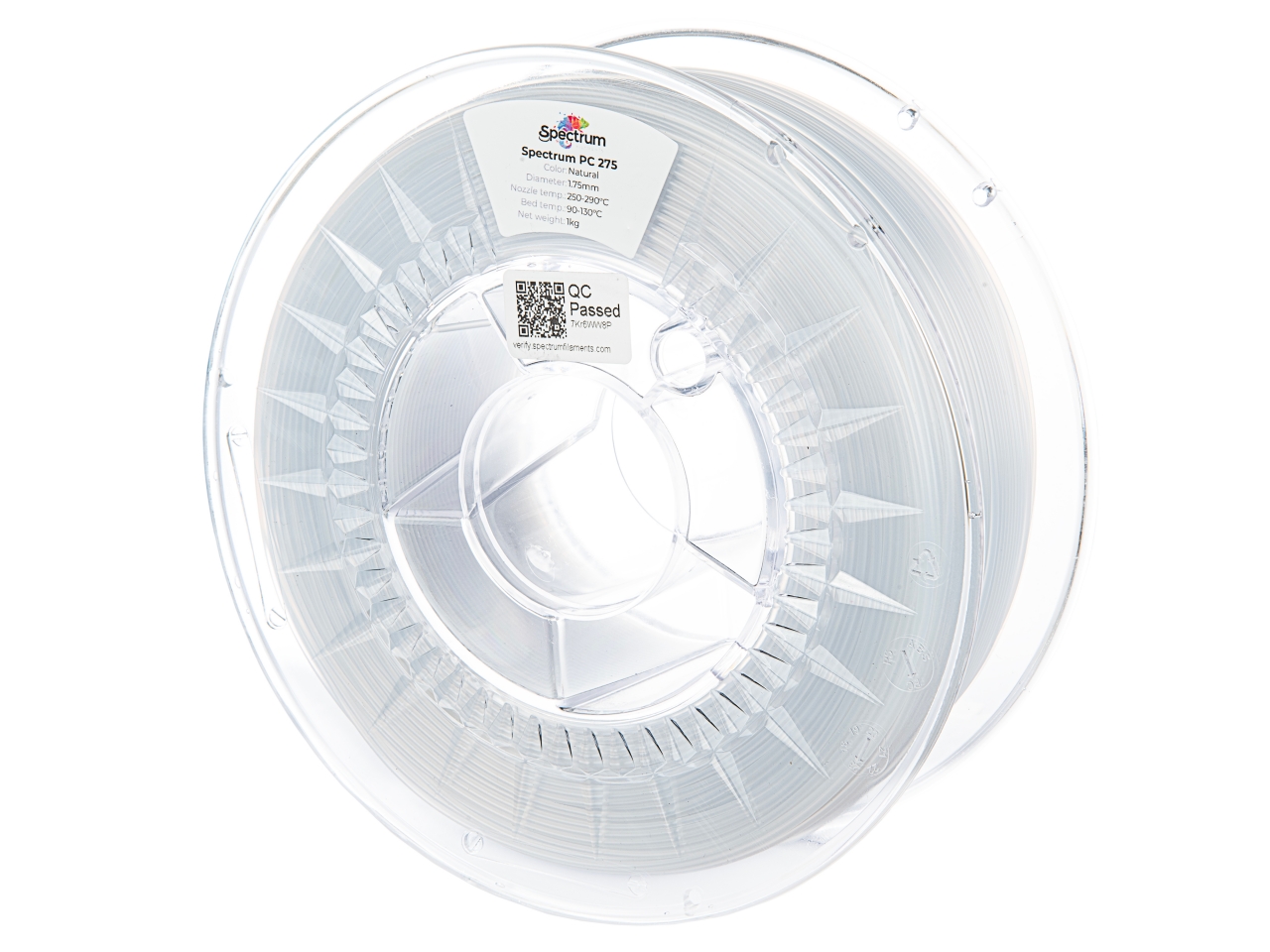
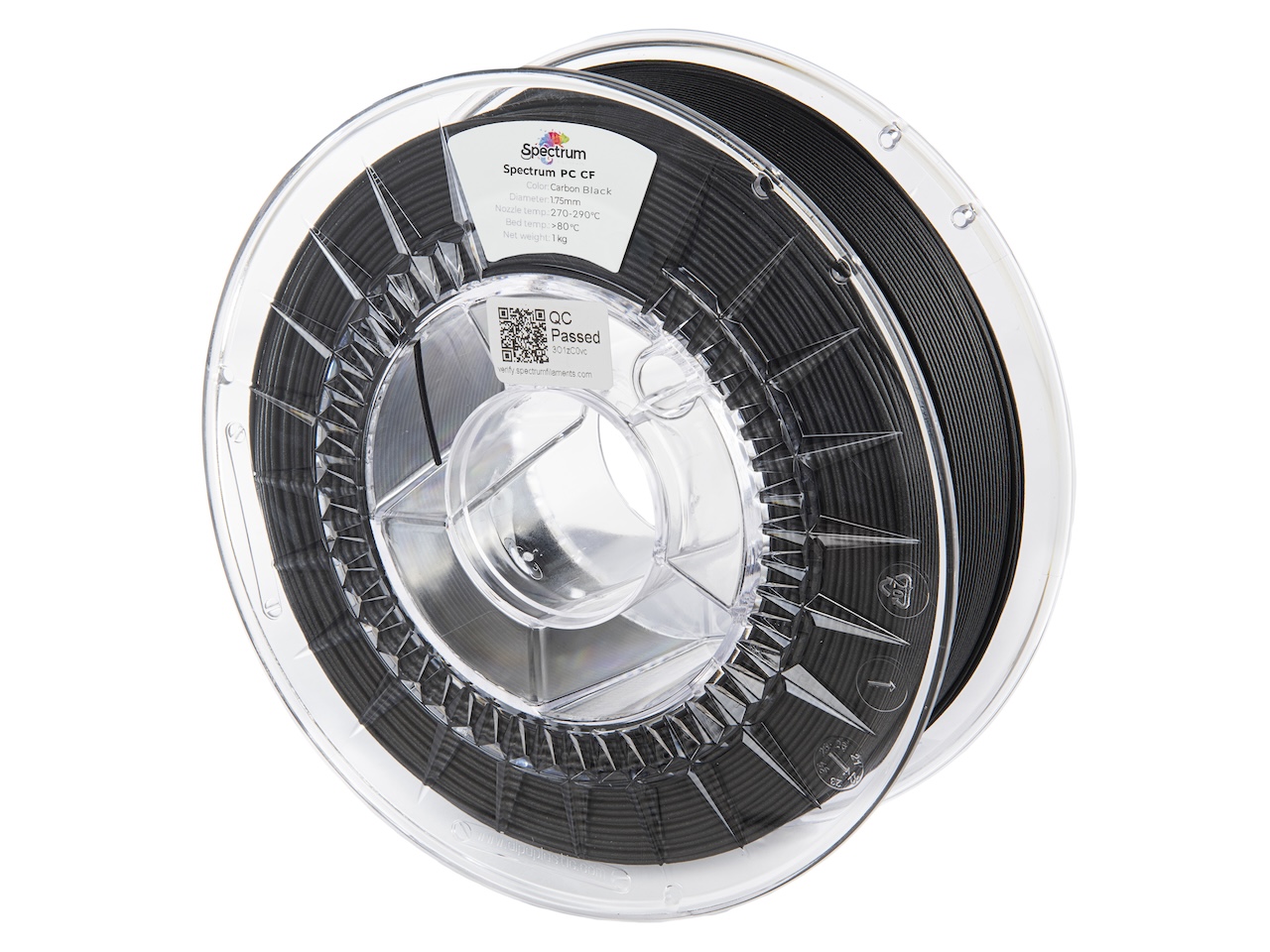
Carbon Fiber Composites (CF-PETG, CF-Nylon, CF-PC)
Carbon fiber-infused filaments combine high-performance base materials with finely chopped carbon fibers, creating a composite that’s lightweight, rigid, and strong. Perfect for professional and engineering applications.
Advantages:
- Extremely stiff and lightweight
- Excellent dimensional stability
- Professional matte surface finish
Disadvantages:
- Abrasive — requires hardened steel nozzle
- Brittle in thin cross-sections
Best Uses:
Drone frames, robotic arms, functional brackets, and engineering-grade components.
Link to Product:
https://shop.spectrumfilaments.com/eng_m_Our-offer_Materials_PC_Spectrum_PC-CF-2723.html
Final Thoughts
When working on functional parts, remember that no single filament is perfect for every use case. The right choice depends on your project’s demands and the environment your parts will operate in.
- For general mechanical strength and simplicity, choose PETG or PCTG.
- For high-heat or industrial durability, go for Polycarbonate.
- For outdoor or UV-exposed components, ASA is the best performer.
- For flexible yet tough parts, Nylon leads the pack.
- And for lightweight, rigid engineering applications, carbon fiber composites shine.
By understanding your material’s strengths and limitations, you can ensure your printed parts are not only functional but long-lasting and reliable.
Below are videos of the Best Filaments for Functional 3D Printed Parts